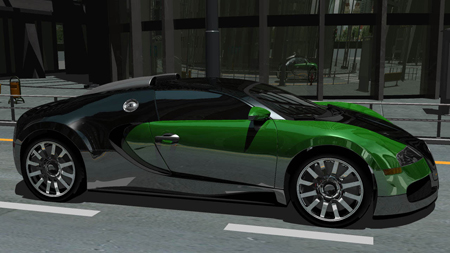At SIGGRAPH 2008 in Los Angeles, NVIDIA held a ray-tracing demonstration to further emphasise the ability and longevity of the GPU.
Ray tracing, a technique used to create images by tracing the paths of light through pixels in an image plane, has been touted by Intel as a long-term successor to rasterisation. The technique, however, is highly CPU-intensive and requires far more processing power than that available in today's home computers.
To put the requirements into perspective, NVIDIA's real-time ray tracing demo used four next-gen Quadro GPUs as part of its Quadro Plex 2100 D4 Visual Computing System. Despite the amount of power at hand, the three-bounce demo render of an NVIDIA-coloured Bugatti Veyron in full HD ran at just 30fps.
The tech demo, therefore, shows that the CUDA-enabled GPU is capable of ray tracing, but the power required for high-res ray-tracing games is still some way away.
It does, however, show NVIDIA's intent to focus on ray tracing, having so far remained reluctant, perhaps in the hope that rasterisation would prove to be the developer's method of choice for years to come.
Ray tracing has previously been showcased on Intel hardware, with a customised version of Quake 4 providing noteworthy results. Similarly, AMD demoed ray tracing at its recent Cinema 2.0 event.
Despite progress on the ray tracing front from the green and red teams, it's Intel blue that remains the front runner. With years of development at hand, Intel hopes that its forthcoming multi-core Larrabee architecture will herald the arrival of ray tracing in the next-generation of games.
Ray tracing is known to achieve near-perfect scaling with multiple cores, and this will clearly favour the many-core Larrabee architecture. The technology might still be out of reach for another year or two, but we'll be hearing a lot more about it as the trio of big players (Intel, AMD and NVIDIA) race to bring ray tracing to the mainstream.
Related reading: Intel lifts wraps on next-generation Larrabee: should NVIDIA and ATI be worried?














